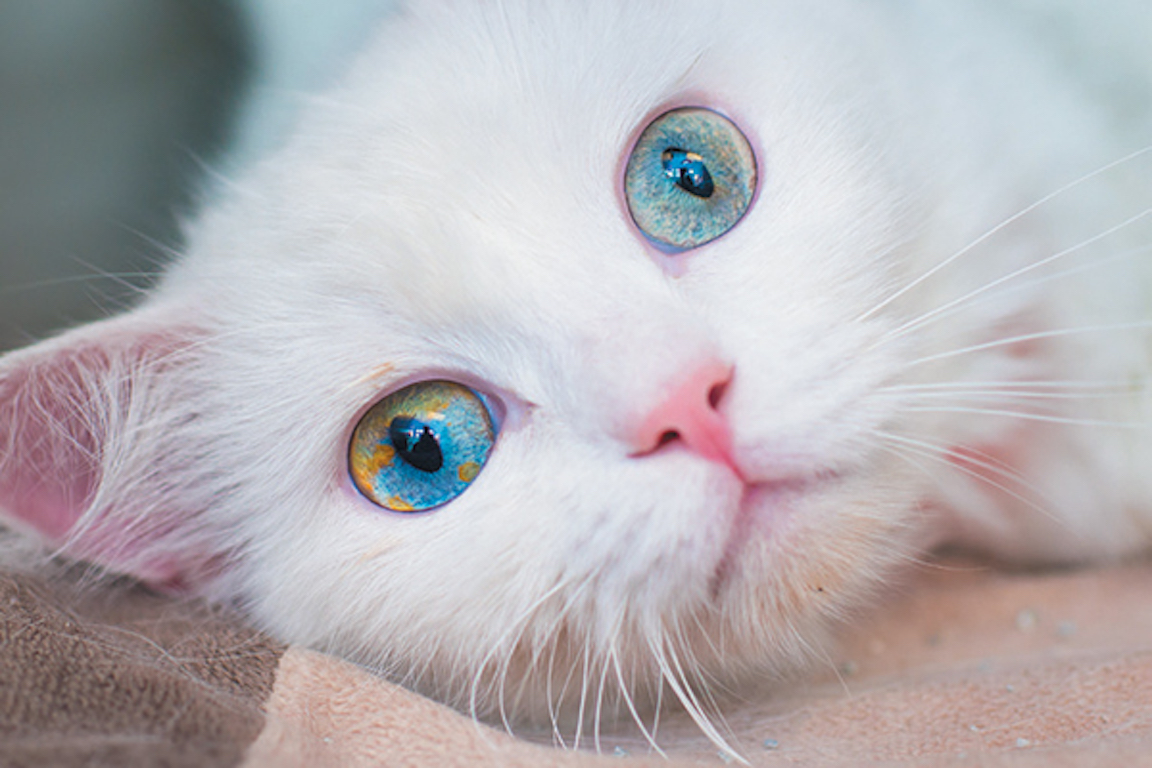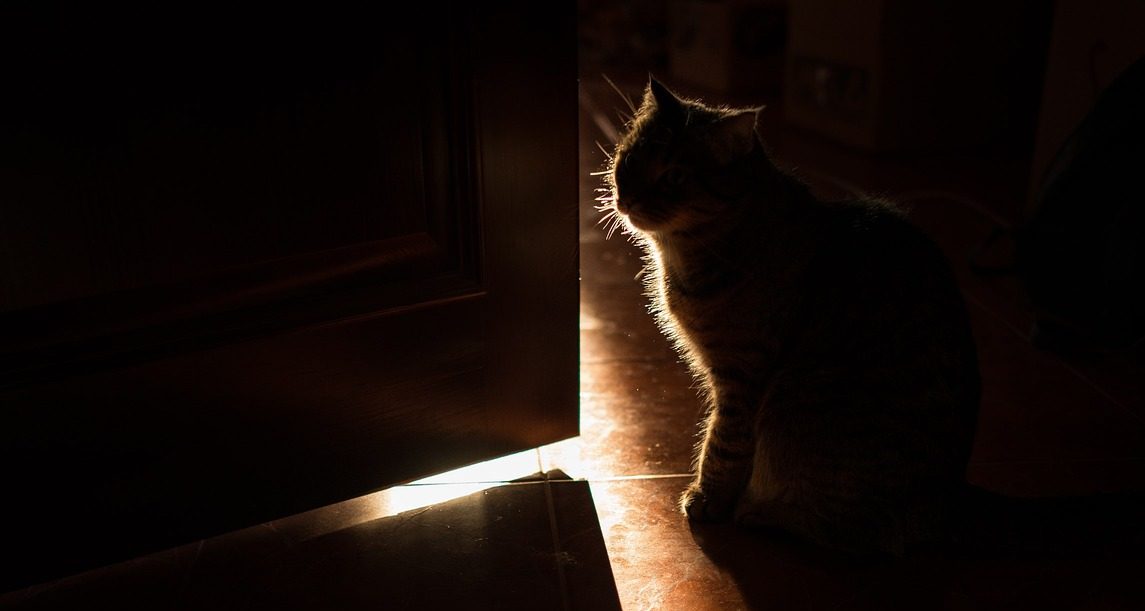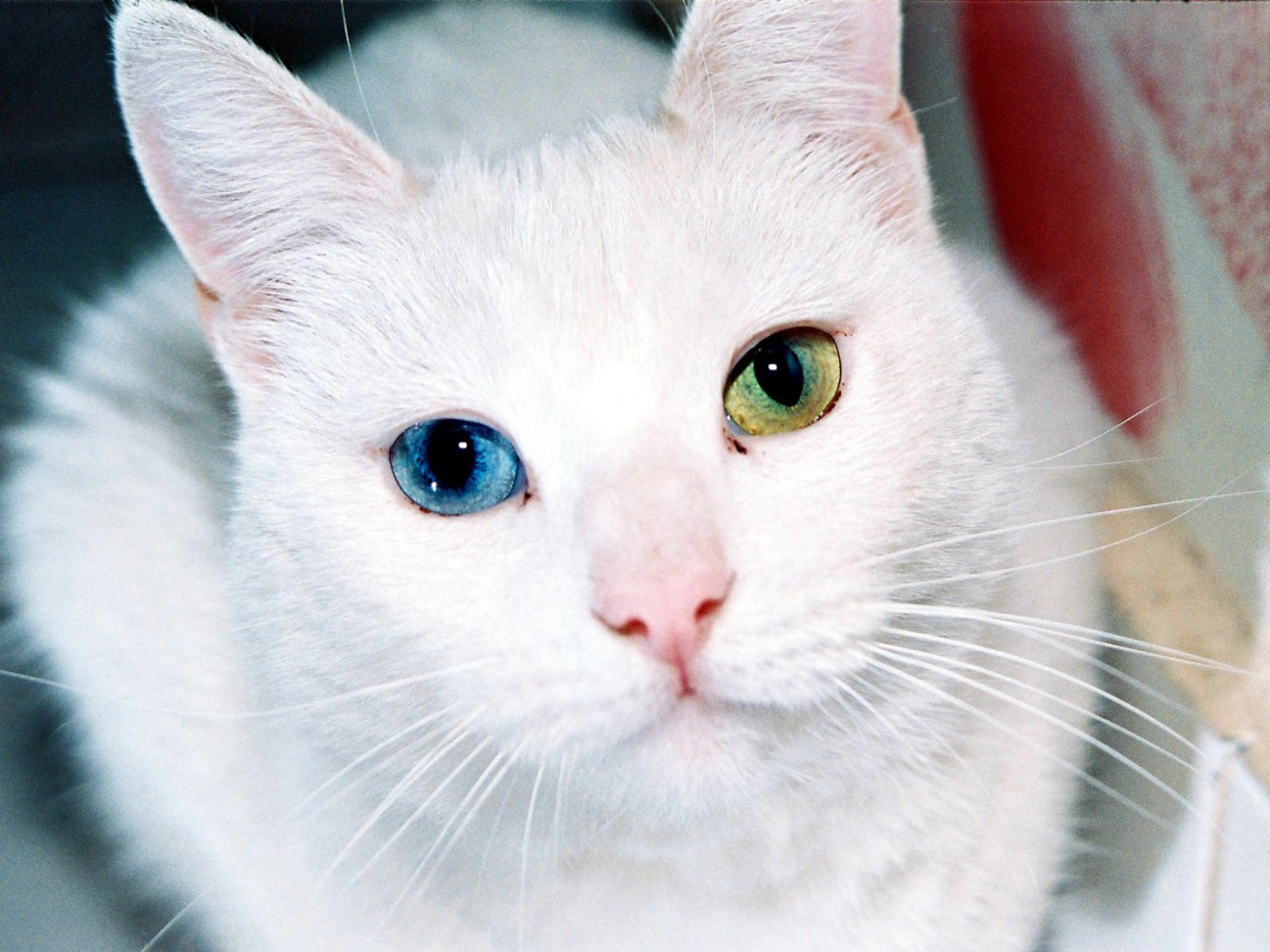How cat eyes work has been a subject of scientific curiosity for eons. Now we have some answers. Discover more about how your feline companion sees the world. Some facts may surprise you!
Can Cats See In Color?

Many of the great joys in life are aesthetic experiences that involve color. Think about the happiness you feel when you look at the blue summer sky. Seeing a rainbow's full spectrum of color never loses its magic, no matter how old you get. Or, how about the romance of sharing a pink and orange sunset?
Unfortunately, your kitty is unable to appreciate color in the same way that humans can. Your cat, like all other cats, is basically colorblind.
I don't mean to be a Debbie downer, but you know what that means. All those bright, colorful (and let's be honest: overpriced) playthings you gifted your pet? They probably see them in varying shades of gray. On second thought, that does explain why my cat prefers to tear apart my new shoes and totally ignore the truckload of toys I bought him.
It's not all doom and gloom! As well as gray, our kitties can also see shades of blue and yellow. Just exactly how much color cats can see has been a long-debated topic in the scientific community. Recently, researchers have suggested that cats can also see shades of green. As research methods develop, we are constantly learning more about how cat eyes work.
What we are sure of, though, is that cat eyes pick up blue-violet and yellow-green wavelengths of light. However, they cannot see red-orange. Note: buy your kitty toys in shades of blue and yellow—and stick to the ones that use movement or sound to keep your cat the most interested.
How cat eyes work is by using the nerve cells in their eyes to detect color. The retina of a cat-eye is made from rods and cones. These are two different types of cells, which we humans also have. The cones are the color-sensitive cells, whereas the rods handle night vision and peripheral vision.
Humans have ten times as many cones as our feline friends. Hence, our world is much more colorful.
Why Do Cat Eyes Glow In The Dark?

Ever been stalked by a demon and feared for your life? If you have ever seen a cat in the dark, you know what I am talking about. Those creepy radiant alien eyes are enough to freak anyone out.
If you understand how cat eyes work, you will realize there is nothing to be scared of. Your cat is not trying to beam you up to another planet or drag you to the depths of hell. The scientific explanation is, thankfully, much less dramatic—but still impressive!
Cats have a mirror layer at the back of their eye, which reflects light, known as the tapetum lucidum. It acts a bit like their personal headlights, bouncing light back into the dark and making it easier to see.
Our eyes do not work how cat eyes work. We, humans, are stuck with a light absorbent black layer at the back of our eyes, which is pretty dull in comparison. Sorry to break it to you, but there will be no shiny laser eyes for y unless you were possessed by something unholy.
Fun fact: most cat eyes glow silvery-green in the dark, but Siamese cats are a bit fancier than that. Their eyes glow ruby red.
How Well Can Cats See In The Dark?

Cats are crepuscular (say that fast five times, I challenge you). This means they are most active in the hours around dawn or dusk. So, seeing well in the darkness is essential for hunting, communication, and getting around safely. How cat eyes work has been specifically designed to meet their needs.
You have likely noticed that your cat's pupils are in the typical vertical slit shape during daytime. Their eye slits are like a camera's aperture: they open and close according to how much light they need to let in to get a good picture.
How cat eyes work at night is extremely impressive. Their pupils can go from thin slivers to full-on Puss-in-Boots in an instant. Our human pupils also widen at night, increasing about 15-fold. Our feline friends can grow and shrink their pupil size by a massive 135 to 300 times!
Researchers are still a bit in the dark (ugh, groan) when it comes to how cat eyes work in larger species—such as lions and tigers. These majestic predators have round pupils, just like us.
Why Do Cats Have Slitted Eyes?

No, it is not just because they are perfect for that side-eye judgy look. How cat eyes work is similar to snake and crocodile eyes. These creatures also have a characteristic slit-shaped pupil.
Researchers who study how cat eyes work think this type of eye helps hone depth perception and focus on prey.
Cat Eyes In Popular Culture

Cat eyes are everywhere. And not just on cats. Roads, humans, and toys have all claimed their version of cat eyes.
The bright cat-eye markings on the road are a safety feature that allows us to see the edges of the road lanes at night. Invented by Percy Shaw and patented in 1934, they work similarly to how natural cat eyes work: by reflecting light from car headlights.
The term cat-eye also refers to one of the earliest, yet still fashionable, makeup looks.

The signature flick outwards from the edge of each eye was first donned in ancient Egypt as far back as 3100 BC by women like Nefertiti and Cleopatra. But it wasn't just women: many Pharaohs also used minerals like malachite and copper ore to create the style.
To this very day, people worldwide are nailing (or, if you are me: struggling with) the cat-eye look. And it doesn't stop with makeup. Glasses in the cat-eye shape are now also very much in fashion—then there are catsuits, cat ear headbands, and hats, and the list goes on. We are obsessed.
Cat's eye marbles were a popular children's toy when I was at school and are now more of a collector's item. They are called cat's eye marbles because of the distinctive multicolor strips that twist through the glass ball like the thin pupil of a feline eye.
How Cat Eyes Work In Communication

I am just going to put this out there. I used to watch a lot of Cat Whisperer. You know, the cool dude with tats and a guitar case full of cat toys?
Well, he taught me that the 'slow blink' is a great way to communicate with your cat. If they return your slow blink, it means they trust you.
The reason is that they don't feel the need to be vigilant and on the lookout for danger when you are around. It is a sign of affection and comfort.
How Cat Eyes Work In Terms Of Distance

Understanding the purpose of cat eyes is key to understanding how cat eyes work, especially when it comes to their ability to see objects far or near.
Cats are predatory mammals, and their prey is primarily small and fast-moving. So, clear vision is vital—but only for what is right in front of them.
Cats are near-sighted, so they see well for about 20 feet (compared to humans who can see for up to 200 feet). Anything more than 20 feet away is more of a blur to our feline companions.
Although cats can't see as far as us, they have a much wider range of peripheral vision. Peripheral vision relates to what you see out of the corner of your eye. Your vision covers roughly 180 degrees, whereas a cat has an extra 20 degrees in its view, making them even more aware of its surroundings.
Have you ever heard of 20/20 vision? Unless you have ever thought much about becoming a fighter pilot, it probably does not mean an awful lot. Considering how cat eyes work on the same scale, they score close to 20/100. This translates to needing to be 20 feet away from an object to see it as clearly as someone with normal eyesight can see at a distance of 100 feet.
Why Are People So Obsessed With Cat Eyes?

Cat eyes look like they are from another galaxy, and who knows? Sometimes cats seem like they could be from another planet, with their mysterious ways and charming personalities.
But, it's not just their serene beauty. How cat eyes work is fascinating and only continues to add to their status as one of the most worshipped animals on Earth.



